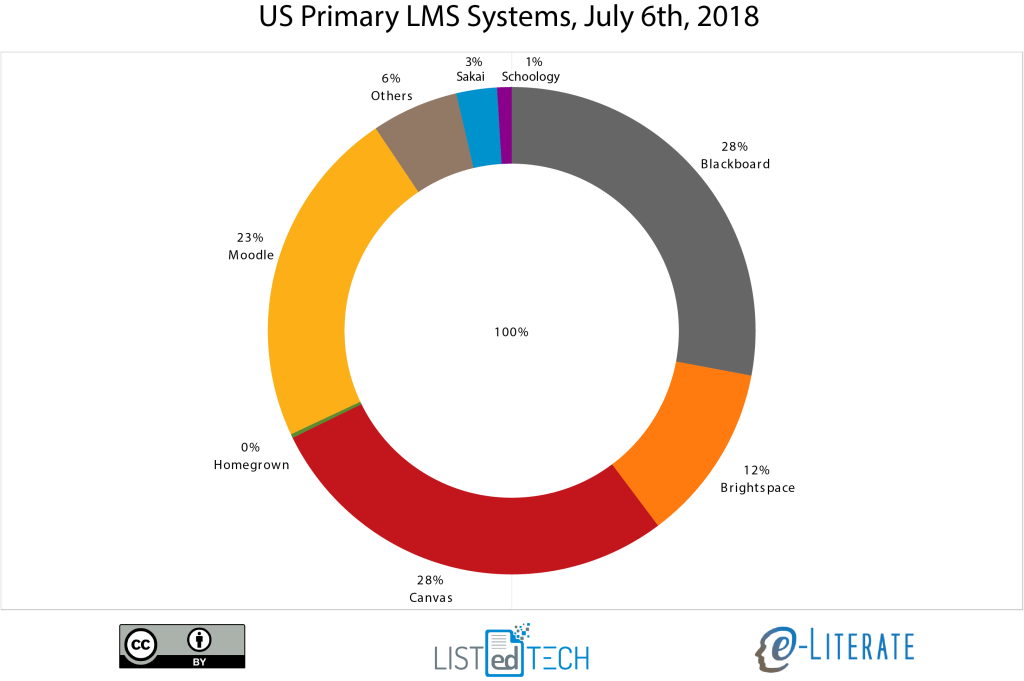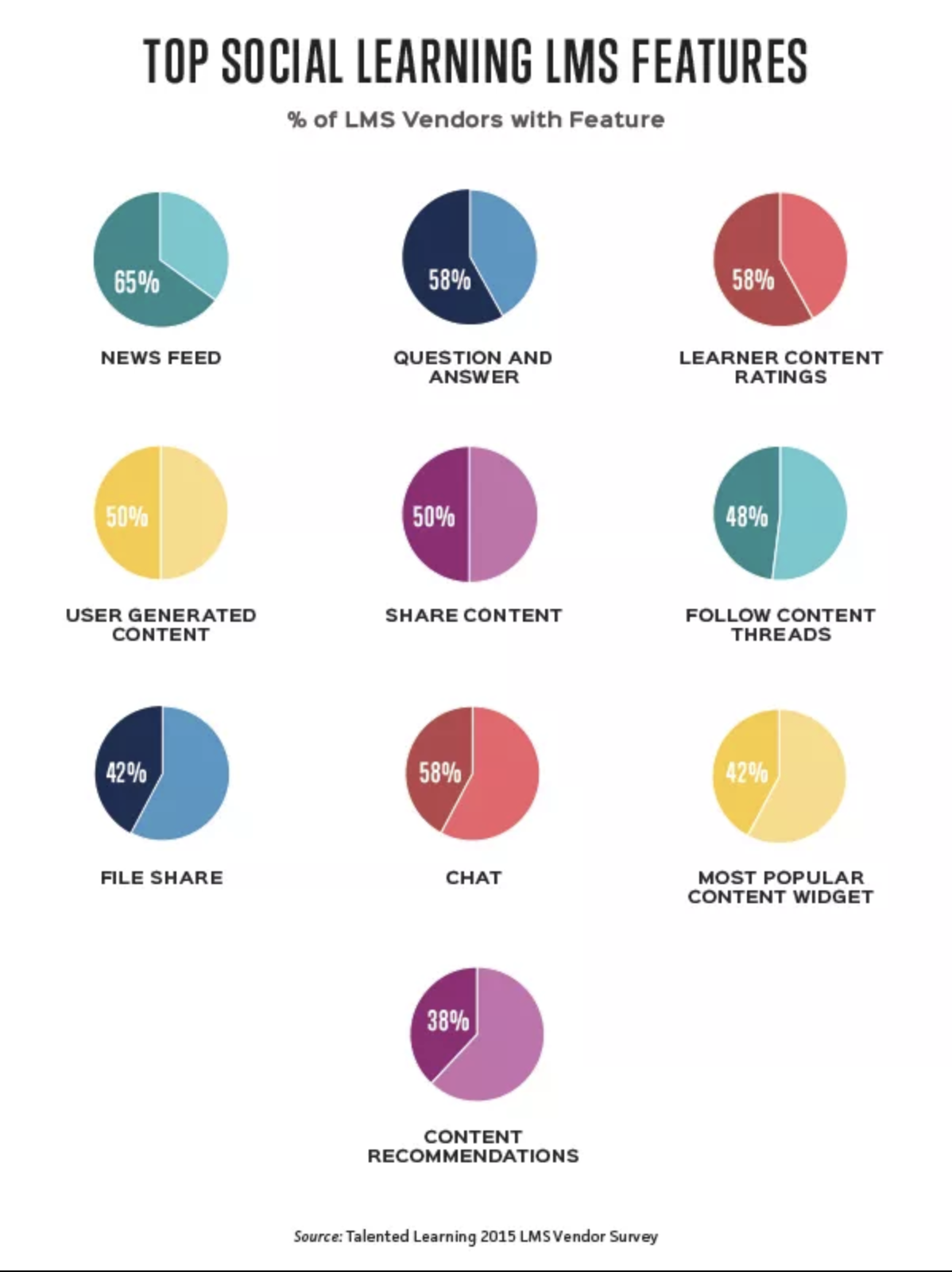
ANU and the LMS landscape
Last year I was asked to help in the planning of a new learning management system - ANU LMS. As an educator and lifelong learner, it was really refreshing to be encouraged to study the latest research and use my experience as a teacher, student and course administrator to collaborate on the project.
I started by investigating the LMS landscape to see where ANU would fit into a crowded marketplace and how it would best serve its users.
The Learning Management System (LMS) industry is seriously big business. An LMS is generally designed to facilitate the online delivery of course materials as well as controlling every step of tracking and reporting student participation. They are commonplace in higher education institutions and often used in company training to manage and run online and blended courses.
A 2015 Educause white paper on the state of the LMS estimated that close to 100% of American colleges and universities run one. It claimed that of faculty, 85 percent use an LMS, with 56 percent using it on a daily basis, and 74 percent saying it is a useful tool to enhance teaching. Among students, 83 percent use an LMS, and 56 percent say they use it in most or all courses (Brown et al, 2015). The figures speak for themselves. A closer look at what each institution is using shows us that just three or four LMS make up the majority of the market (Feldstein, 2018).
Although the main players are feature rich with well-developed tools, many LMS users find they do not meet the exact requirements of their institution. Even doing a side by side comparison is complicated as information on the specifics of key features is difficult to find without signing up. The pricing is not clearly laid out and it is confusing with several packages available. The user forums highlight many cases of trainer frustration.
The 2015 Educause report goes on to explain that a significant percentage of higher education institutions intend to replace their LMS in the next three years, which is far higher than typical for enterprise-class applications. Despite across the board LMS adoption, surprisingly few instructors use more than its basic features with just over 40 percent of teachers polled failing to use the LMS ‘to promote interaction outside the classroom.’ The report concludes damningly that the ‘LMS has been highly successful in enabling the administration of learning but less so in enabling learning itself. Initial LMS designs have been both course- and instructor-centric, which is consistent with how higher education viewed teaching and learning through the 1990s’ (Brown et al, 2015)
Almost 30 years later that view has changed and so an LMS in 2019 needs to be more attuned to the needs of the learner.
The 2017 Horizon report which is written by a panel of 80 Edtech experts also concluded that the vast majority are limited in capacity, inflexible and more worryingly, ‘too narrowly focused on the administration of learning rather than the learning itself. ‘(Becker et al, 2017)
So how is ANU different?
From the outset it was clear, ANU was not just going to copy and rehash the standard features of the industry leaders. It was looking to create something innovative, forward-thinking and that had the learner at its heart. We wanted to look in detail at the teacher/learner experience and how we could use Systemseed’s design expertise with my years of classroom/blended learning know-how to make a truly user centred product.
ANU and Social Learning
It was decided to make social learning the keystone of the project but instead of just using the term as a marketing buzzword we went right back to the key principles that underpin the concept. This meant that relatively simple features like an online asynchronous forum were weeks in the planning. We looked at how they needed to be structured, how replies could be organised, evaluated, stored, easily retrieved, integrated into notes etc. We also spent time looking at the experience of the teacher, learner and moderator at every stage of the process.
The top social learning features were compiled and investigated in depth in both Higher education institutes and the big 10 industry frontrunners. The goal was to create a system that could facilitate knowledge sharing and creation that was designed for every stakeholder in the process.
ANU and research-based design
An information repository was created to store journals and articles connected to different e-learning tools and standard LMS features to understand how ANU could best reflect what cutting edge research was telling us about technology-enhanced learning. This meant that each feature was created as the result of an ongoing deep dive investigation that looked not only at how the big LMS players deployed a feature but at what recommendations had been made by teachers and academics.
As ANU developed it became clearer that the LMS of the future was going to look very different to what we have now. As it stands the market is controlled by a small number of companies that ‘make it difficult to expand the feature sets and integrate external resources in ways that best align with evolving institutional needs and pedagogies’ (Becker et al, 2017) This means that common, everyday tools like Google Docs or Whatsapp can’t be integrated into an LMS even if they are commonly used in many learning scenarios.
The answer is in NGDLE (Next Generation Digital Learning Environments) which will aim to create a flexible ecosystem of learning.
An open source platform like ANU is an example of the LMS of the future that will have the capacity to be adaptive to the learning challenges of tomorrow and allow institutions the flexibility needed to create collaborative and truly accessible learning.
If you would like to demo Anu LMS or have a digital education project you would like to speak to us about, please email [email protected] to arrange a call.


